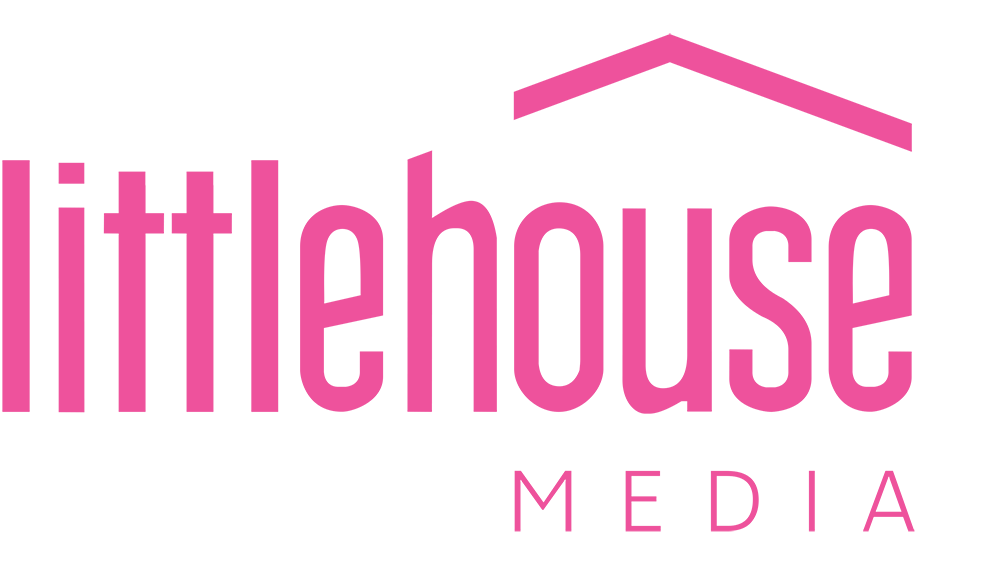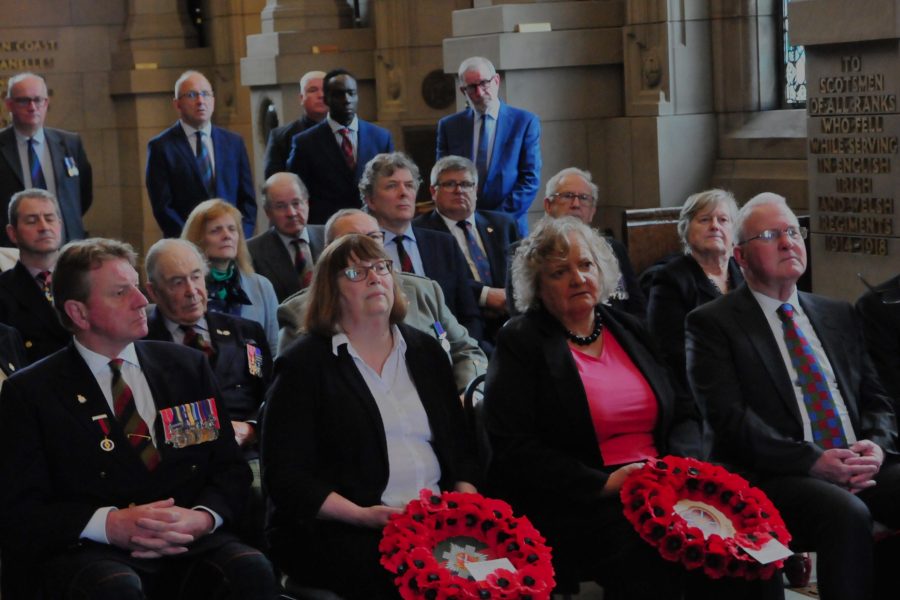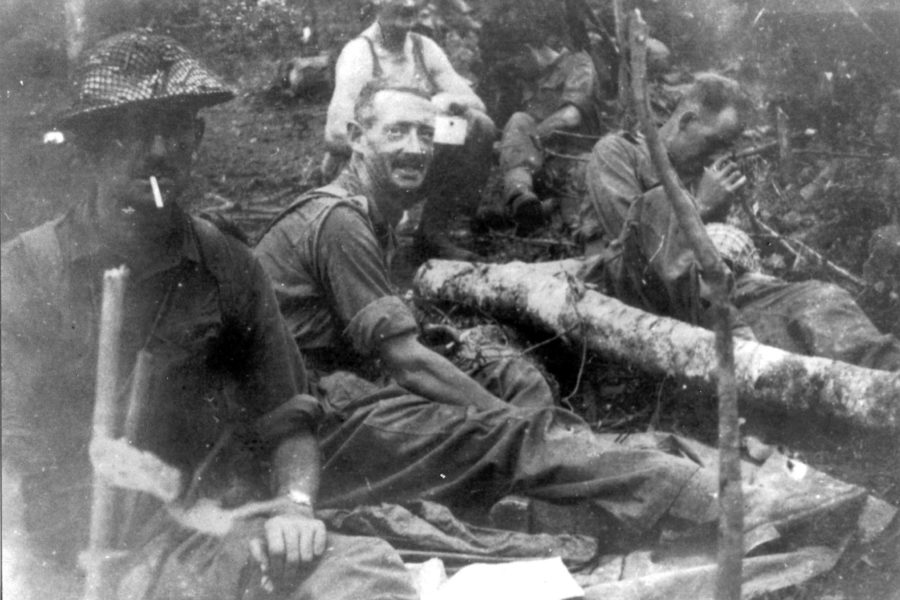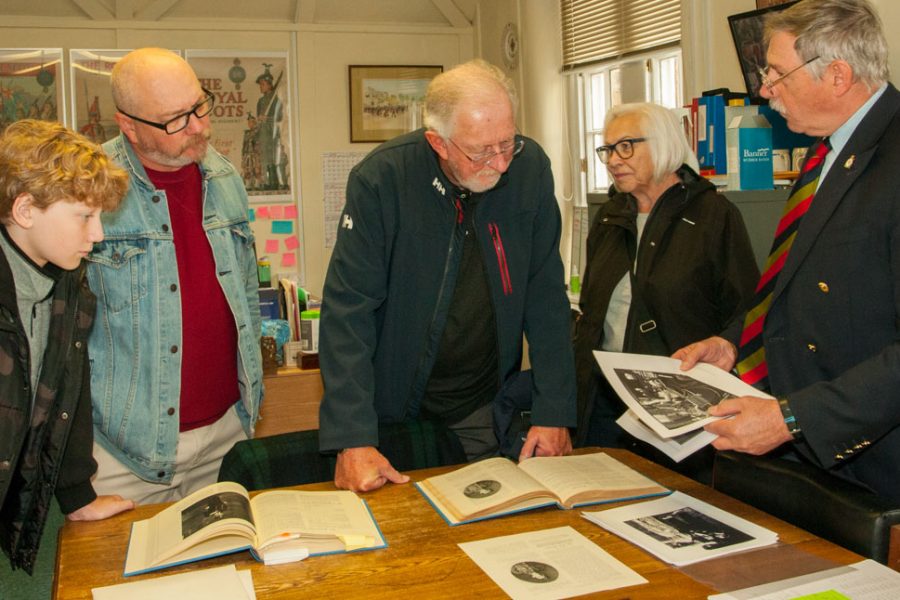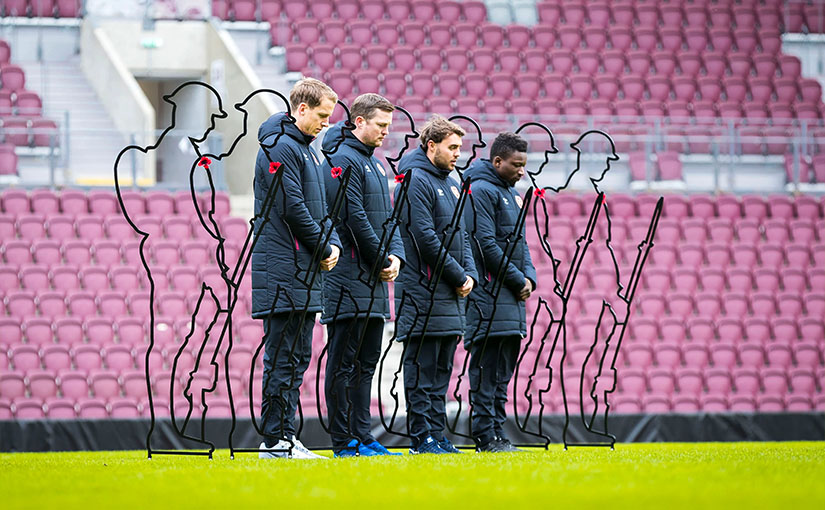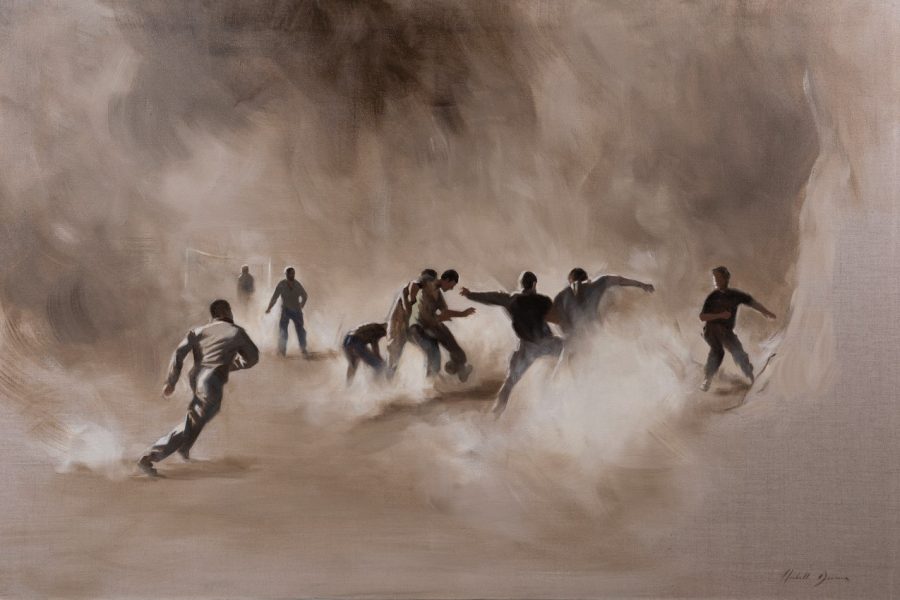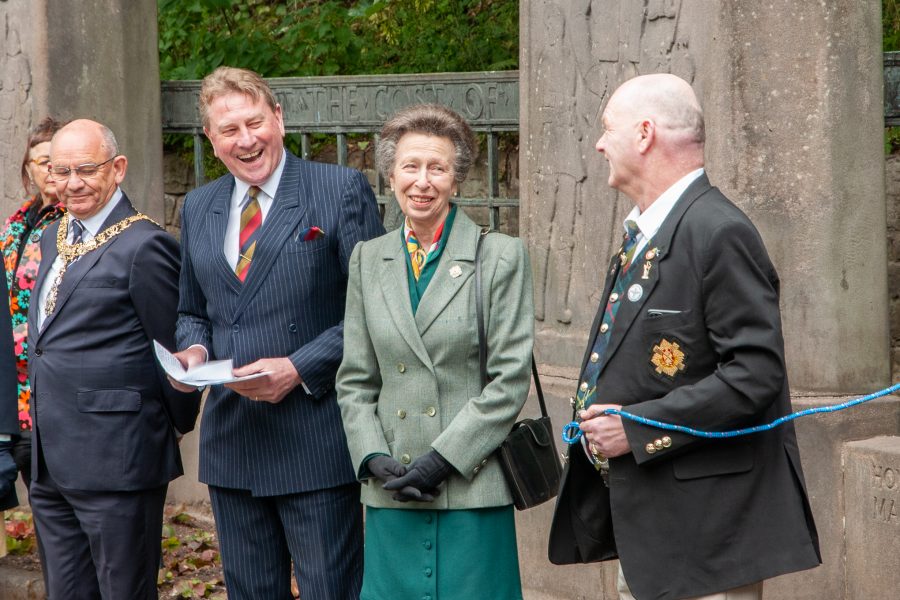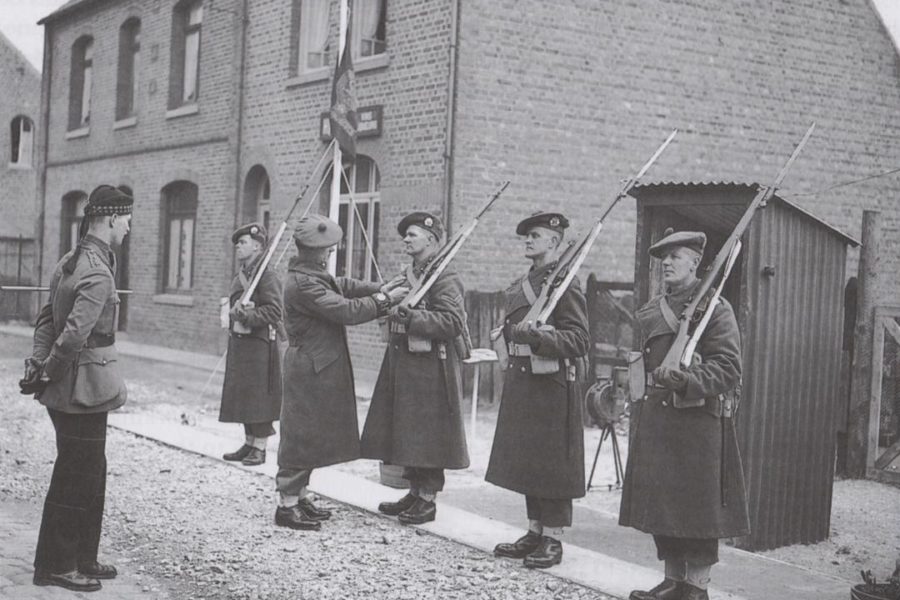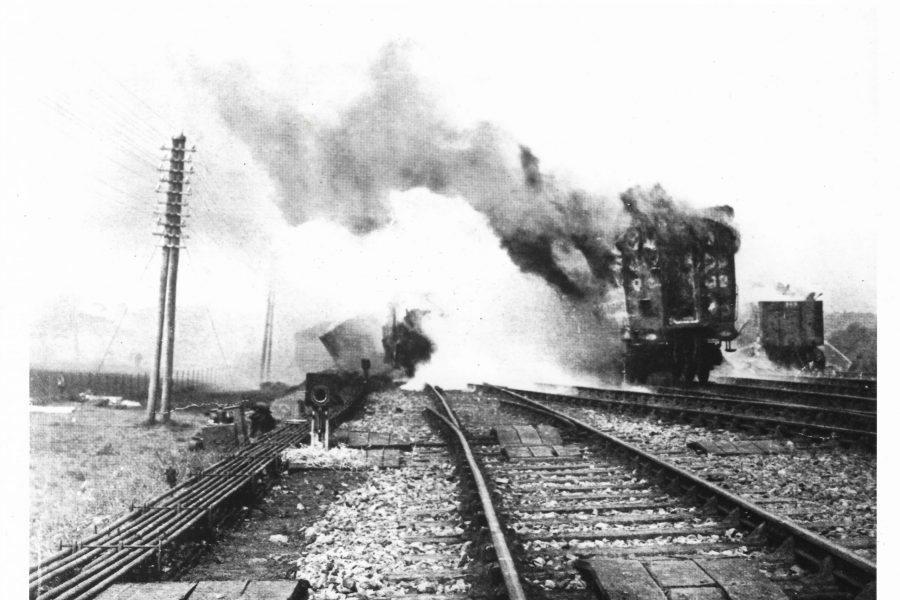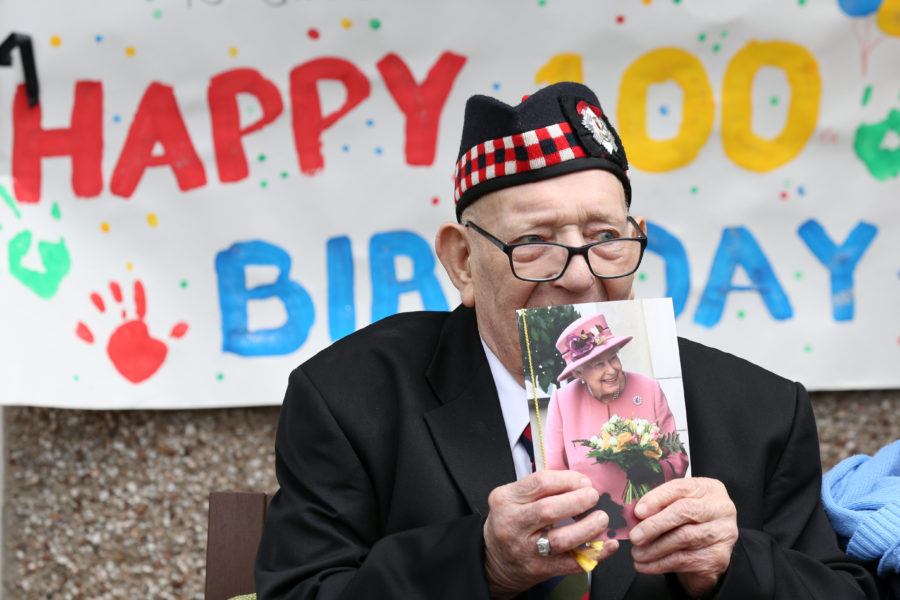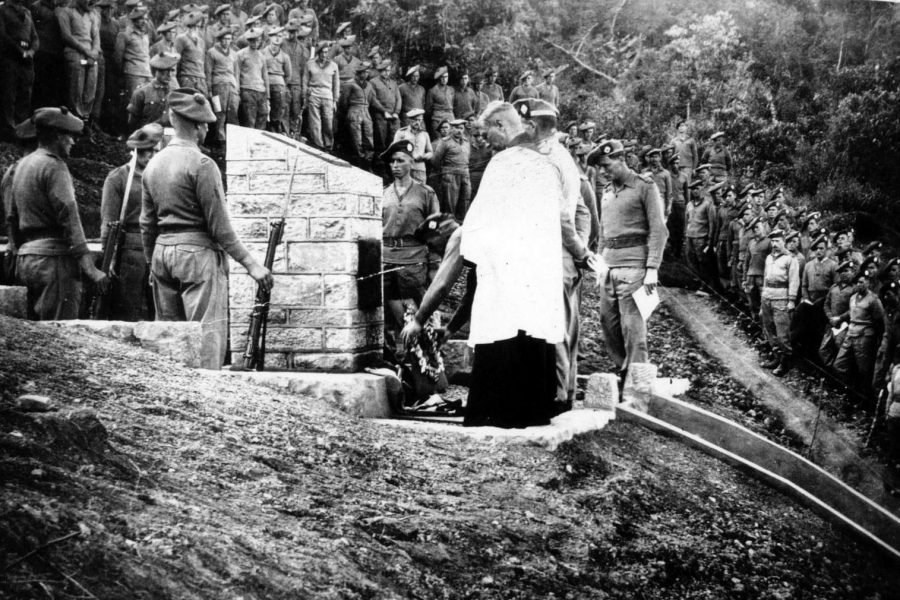Commemorating those Royal Scots who perished in Britain’s worst rail disaster
On Saturday 25 May 2024, The Royal Scots Regimental Association will hold its annual Memorial Service at Rosebank Cemetery, Pilrig Street, Edinburgh, to remember all those who lost their lives in the Gretna Rail Disaster in May 1915, the worst rail disaster in the country’s history.
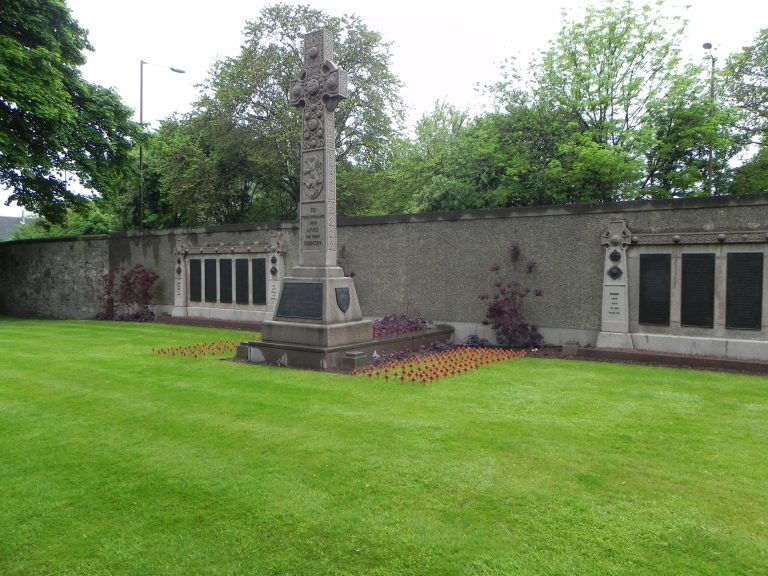
At approximately 06:49 on the morning of Saturday 22 May 1915 a troop train carrying half (498 all ranks) of the 7th (Leith) Battalion, The Royal Scots (The Lothian Regiment) (7RS), who had been deployed to Gallipoli and were heading south, collided head-on with a local passenger train.
The passenger train had been ‘parked’, facing north, on the south-bound main line at Quintinshill, just North of Gretna, to allow a following express to overtake it. The troop train overturned, mostly onto the neighbouring north-bound mainline track and, a minute later, the Glasgow-bound express ploughed into the wreckage causing the troop train to burst into flames.
Three officers, 31 NCOs and 182 soldiers of 7th Battalion The Royal Scots, the driver and fireman on the troop train, and 10 others, mostly from the express train, died and many more were injured in what was the worst rail disaster in the country’s history.

Led by their Pipe Band and the Association Standard Party, The Royal Scots Regimental Association will parade from the cemetery entrance on Pilrig Street at 10:45. The service will be conducted by Rev Stephen Blakey, formerly padre of 1st Battalion, The Royal Scots, commencing at 10:55 at the Gretna Memorial which stands in the western corner of the cemetery. All are most welcome to attend.
Brigadier George Lowder, President of The Royal Scots Regimental Association, said: “Amidst all the sacrifices and loss of The First World War, the tragic loss of 216 Members of 7 RS in the Quintinshill Rail Disaster in the early morning of 22 May 2015 en route to embarking for Gallipoli was a huge blow to The Regiment, to Leith, and Edinburgh.
“Leith marked their passing in a way that highlighted the close links between the Battalion and the Community. It was believed that every family in Leith was touched by the disaster and the Community continued to suffer as others injured in the crash subsequently died of their injuries. Our commemoration remembers not only those of 7RS who lost their lives but also the close tie between The Regiment and Leith that still endures today”.
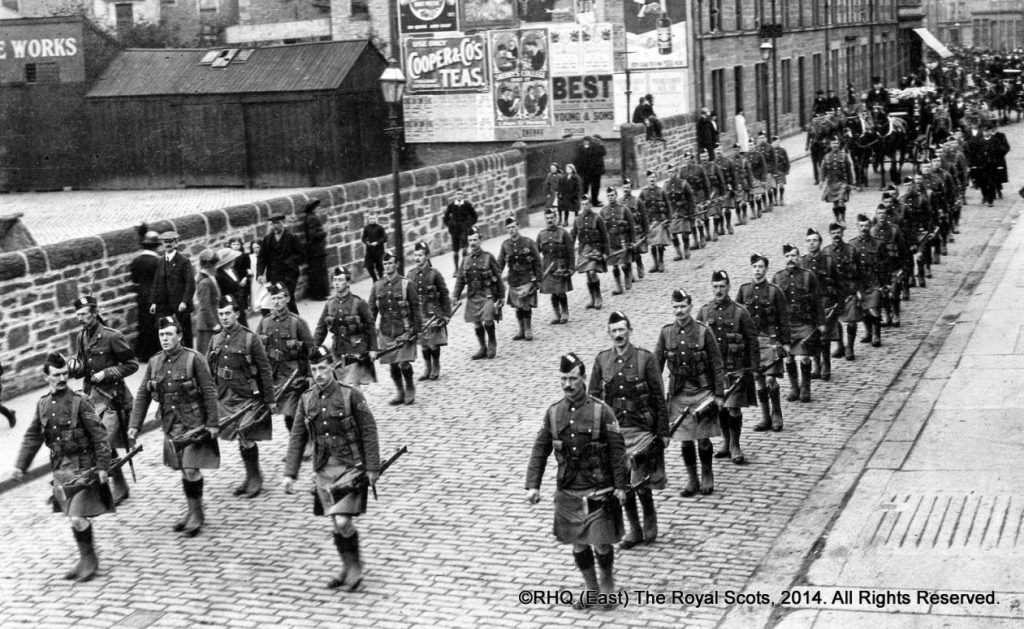
Ends
Royal Scots Regimental contacts:
Nick Edwardson – Press Office – 07885 105813
Lt Colonel David Jack – Regimental Secretary – 0131 557 0405
Images :
Images sourced from The Royal Scots Regimental Museum but credits are unknown.
Notes to Editors:
The memorial service
Rosebank Cemetery, Pilrig Street, Edinburgh at 10:45 on Saturday 25 May 2024
This will follow the format of a normal remembrance service. An order of service will be available on the day and copies will be distributed at the memorial. Official wreaths will be laid during the service. After the service, there will be an opportunity for individuals to lay wreaths. The service will be conducted standing and no seating will be provided. There are a couple of benches nearby for those who are unable to stand for long periods.
The crash
At 6.49 am on Saturday 22 May 1915 a troop train carrying half (498 all ranks) of the 7th (Leith) Battalion, The Royal Scots (The Lothian Regiment) (7RS) collided head-on with a local passenger train, which had been ‘parked’, facing north, on the south-bound main line at Quintinshill, just North of Gretna, to allow a following express to overtake it. The troop train overturned, mostly onto the neighbouring north-bound mainline track and, a minute later, the Glasgow-bound express ploughed into the wreckage causing it to burst into flames. The ferocity of the fire, and consequent difficulty of rescuing those trapped in the overturned and mangled carriages, was compounded by the fact that most of the carriages were very old, made of wood and lit by gas contained in a tank beneath them. Between the crash and the fire a total of 216 all ranks of 7RS and 12 others, mostly from the express but including the driver and fireman on the troop train, died in, or as an immediate result of what was, and remains, Britain’s worst railway disaster.
The aftermath
7RS was a Territorial battalion that recruited mostly from Leith and had been mobilised at the start of The Great War. It was initially employed on Coastal Defence duties on the Forth until April 1915 when it moved to Larbert, near Falkirk, before deploying to France. At the last moment, orders were received changing the Division’s deployment to Gallipoli, and at 3.45am on Saturday 22 May the first train left Larbert Station carrying Battalion Headquarters, A and D Companies.
Of that half-battalion on the train only sixty-two survived unscathed. These survivors, including the Commanding Officer, continued to Liverpool where six officers embarked, and sailed on the Sunday on HMT Empress of Britain with the second half of the Battalion; one officer and the 55 NCO and soldier survivors were sent back to Edinburgh.
It was a devastating blow to the Battalion and the whole population of Leith – it was said that there was not a family in the town untouched by the tragedy, probably made worse by the fact that, out of the 216 who died in the disaster, or soon afterwards from their injuries, only 83 were ever identified. The remaining 133 bodies could not be identified or were cremated within the firestorm of the wreckage. On Sunday 23rd 107 coffins were taken back to Edinburgh and were placed in the Battalion’s Drill Hall in Dalmeny Street, off Leith Walk. On the afternoon of Monday 24th May, 101 of these were taken in procession for burial in a mass grave that had been dug in Rosebank Cemetery, Pilrig Street, about a mile from the Drill Hall. A local report said: ‘The route was lined by 3,150 soldiers, thousands of citizens stood shoulder to shoulder on the pavement; shops were closed, blinds drawn and the traffic stopped’.
The Memorial
This was paid for by public subscription and was unveiled on 12 May 1916 by the Earl of Rosebery, Honorary Colonel of the Battalion, alongside the communal grave in Rosebank Cemetery. It takes the form of a Celtic cross, standing 15ft 6ins, made from Peterhead granite. There is an inscription and an explanatory plaque to the front and shields to each side, one bearing the Regimental Badge and the other Leith Burgh’s Coat-of-Arms. To the rear, against the Cemetery wall, are two tablets, each with five bronze plaques which bear the names of 216 men who died in, or immediately after the disaster, arranged by rank, and in alphabetical order.
The Memorial and the grave area are now maintained by The Commonwealth War Graves Commission to whom The Royal Scots Regimental Association are truly grateful. Every year, on the Saturday closest to 22 May the Regimental Association, supported by local organisations, holds a Memorial Service and wreath laying at the Memorial.
During the First World War over 100,000 men served in The Royal Scots (more than the size of the entire army today), of whom more than 11,000 were killed and 40,000 wounded. The Regiment acknowledges their sacrifice in a Roll of Honour first published to mark the centenary of the armistice in 1918.
Rolls of Honour 1914 – 2010 | The Royal ScotsRolls of Honour 1914 – 2010 | The Royal Scots
The Royal Scots served in every campaign except Mesopotamia and East and West Africa. The regiment was awarded 79 Battle Honours (the official acknowledgement of a military unit’s achievements in a specific action or campaign). Ten of these honours were selected to be carried on the King’s Colour. One of these ten was the award for ‘Gallipoli 1915-16’ where 7RS served.
Colours & Battle Honours | The Royal Scots
The Royal Scots Museum.
The award-winning Regimental Museum occupies a prominent position inside Edinburgh Castle and tells the story of The Royal Scots; 373 years of service from the Regiment’s founding in 1633. A display within the museum is devoted to the crash. Entry to the museum is covered by the admission ticket to the Castle.
Forthcoming events
- 80th Anniversary of the Battle of Kohima
A Memorial Service at Lauriston Castle, Saturday (Saturday 29 June)
The Regiment will conduct a memorial service for those members of the Regiment who died during the Battle of Kohima (dates). The battle is widely regarded as a turning point in the campaign in the Far East - Royal Scots Museum Outreach Exhibition at Tynecastle Park (Friday 5-Wednesday 10 July)
Connecting the People of Edinburgh, The Royal Scots, and Hearts as part of the Club’s 150th Celebrations
The Royal Scots Museum comes to Tynecastle to celebrate the links between the Regiment and the Heart of Midlothian Football Club since 1914 through artefacts and human stories.
In 2006, after 373 years of unbroken service, The Royal Scots left the British Army’s order of battle as The Royal Regiment of Scotland was formed from its predecessor Scottish Infantry Regiments.
The Royal Scots Regimental Trust now exists to support the needs of its former members through Association and Benevolence activity and to broaden public awareness of its legacy of loyal service to Crown and Country through its Museum and The Royal Scots Club”
Website addresses:
· Home Page: http://www.theroyalscots.co.uk/
· Regiment’s history: http://www.theroyalscots.co.uk/history/
